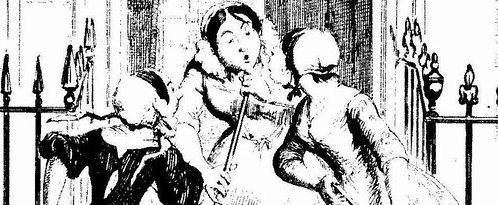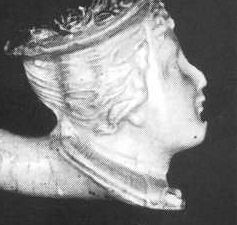A coherent and cogent explanation of the growth of belief in creationism by Timothy Burke over on Cliopatra.
"One tentative hypothesis that requires thinking in rich and subtle ways about the history of the United States over the last century is this I'd offer is this: evolution and creation science have become over many decades symbolic compressions of much wider, more complex and more difficult to articulate social and cultural cleavages. They're containers for a wide variety of resentments, conflicts, fears and misrecognitions. In this reading, you have to learn to look below the surface of the ocean for the rest of the iceberg."
Also in today's
Times (unfortunately needing a subscription if you are outside the UK), an attempt to explain why more people in Britain say they believe in ghosts.
A sample:
"Psychologically, the death of others is a highly emotionally, challenging experience,” he [Philip Corr, a psychologist at the University of Wales Swansea]says.
“The belief in ghosts and religion in general may well have a strong Darwinian basis in natural selection. Individuals who had coping strategies, albeit irrational ones such as believing in the existence of spirits, might have been better able to deal with these negative health consequences. So we should not be surprised to find the widespread acceptance of such beliefs that protect us against the realisation that death is inevitable and final.”
I was interested in both of these because I've been recently musing on a claim that a fundamental turning point in intellectual discussions - when religion was forced on to the defensive, as the position that had to be fought rather than the automatic belief - came in John Stuart Mill's
Examination of Sir William Hamilton's Philosophy of 1865.
Berman says: "In a discussion of atheism, Hobbes had asked: 'Upon what confidence dare any man, deliberately I say, oppose the omnipotent?' Mill had the confidence to do this 'on the acknowledged principle of logic and of morality', and he did so openly and boldly and with devastating effect ... He broke a spell and ... opened up a new irreligious era".*
This
site appears to some degree to share this view. (And there's a solid exploration of Mill the philosopher
here.)
I'm trying to decide if Berman was right, at least about this being a tipping point, and about whether we are still going forward or indeed in recent years, at least in Britain and Australia, the two countries with which I am most familiar, we have at some times gone backwards, or indeed are going so. Certainly the academic in
The Times is happy to proclaim his atheism, but I think most news sources are careful not to address the issue, although if you dig deeply enough you'll find an underlying assumption of atheism.
It makes sense for newspapers no doubt, to avoid offending readers (and many still run lists of church services, weekly columns from religious figures etc), but is it good for public discourse to dodge the issue?
*From D. Berman,
A History of Atheism in Britain: From Hobbes to Russell, London, Routledge, 1990, p. 237.











